A well-fitted road cycling shoe enhances performance and comfort․ With varying sizes across brands‚ a size guide is essential to ensure the perfect fit‚ optimizing power transfer and reducing discomfort during rides․
Importance of Proper Fit in Road Cycling Shoes

A proper fit in road cycling shoes is crucial for both performance and comfort; Ill-fitting shoes can lead to discomfort‚ blisters‚ and even reduced efficiency while pedaling․ A snug fit ensures optimal power transfer and prevents slippage‚ which is essential for maintaining control and speed during rides․
Cycling shoes are designed to be tighter than everyday footwear‚ as they need to support the foot during intense efforts․ However‚ they should not be overly restrictive‚ as this can impede circulation and cause fatigue․ The right fit balances snugness and flexibility‚ allowing for toe wiggle room while maintaining a secure feel․
Properly fitted shoes also reduce the risk of hotspots and discomfort‚ especially on long rides․ Since shoe sizing can vary between brands‚ using a size guide or trying shoes on is highly recommended to ensure the best fit for your foot shape and riding style․
How Road Cycling Shoes Differ from Other Cycling Shoes
Road cycling shoes are specifically designed for efficiency and performance on paved surfaces․ Unlike other cycling shoes‚ such as mountain bike or casual cycling shoes‚ road shoes typically feature stiffer soles and a more streamlined design to maximize power transfer with each pedal stroke․
They often have three-hole cleat systems‚ which provide a secure connection to clipless pedals‚ allowing for better control and efficiency․ This is in contrast to mountain bike shoes‚ which may have a more rugged sole for walking and two-hole cleat systems for versatility․
Road shoes also tend to have a snugger fit and less cushioning‚ prioritizing lightweight construction and aerodynamics․ These differences make road cycling shoes ideal for competitive racing and long-distance rides‚ where every detail matters for optimal performance․
Why a Size Guide is Essential for Optimal Performance
A size guide is crucial for ensuring road cycling shoes fit perfectly‚ as improper sizing can hinder performance and cause discomfort․ Ill-fitting shoes may lead to reduced power transfer‚ numbness‚ or even injury during long rides․
Using a size guide helps cyclists select shoes that match their foot length and width‚ accommodating personal preferences for snugness or toe wiggle room․ It also accounts for variations between brands‚ as sizing can differ significantly․
By following a size guide‚ cyclists can optimize their shoe fit‚ enhancing efficiency‚ comfort‚ and overall riding experience․ Proper sizing ensures that shoes function as intended‚ supporting performance goals whether racing or endurance riding․
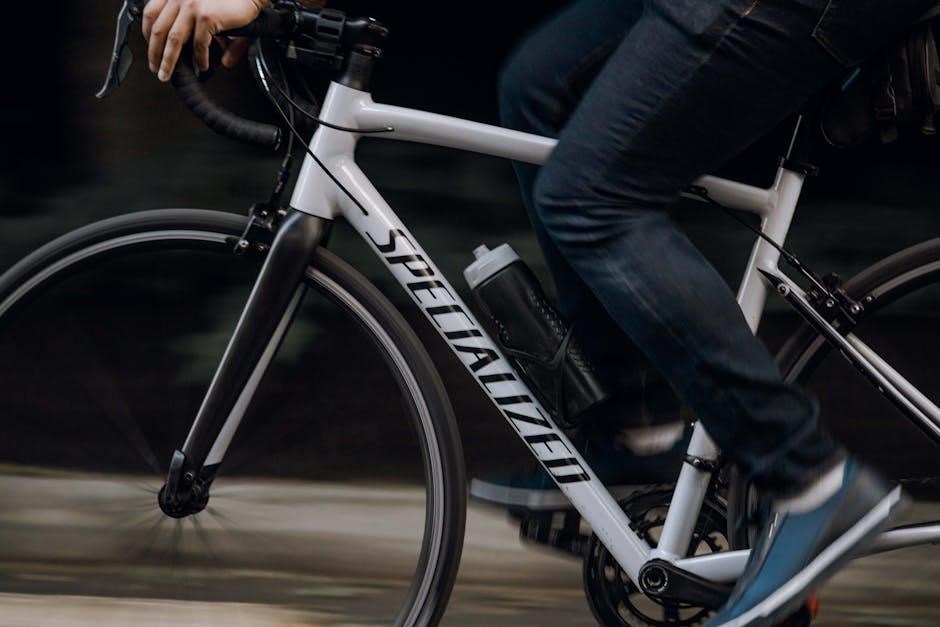
Key Considerations for Choosing the Right Size
Accurate foot measurement‚ brand-specific size charts‚ and understanding European sizing standards are vital․ Snug fit‚ toe wiggle room‚ and seasonal adjustments ensure optimal comfort and performance in road cycling shoes;
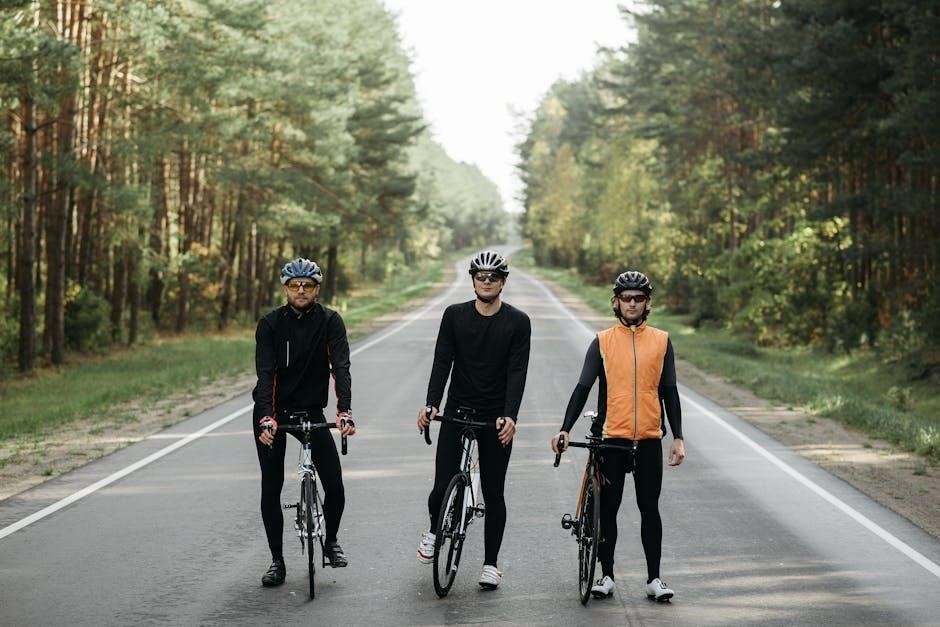
Understanding European Sizing Standards
European sizing is the universal standard in cycling shoes‚ originating from the sport’s European roots․ Sizes are based on the foot’s length in centimeters‚ with each size increasing by approximately 6․67mm․ For example‚ a size 40 corresponds to a foot length of about 24․7cm‚ while a size 45 is around 28․3cm․ This system ensures consistency across brands‚ eliminating guesswork․ However‚ variations exist between brands‚ so consulting specific size charts is crucial․ Some brands may offer high volume options for wider feet or narrower fits for slimmer feet․ Always measure both feet‚ as they may differ‚ and use the longer measurement to ensure a comfortable fit․ This method ensures optimal performance and comfort during long rides‚ reducing the risk of discomfort or injury․
How to Measure Your Foot Accurately
To ensure the perfect fit in road cycling shoes‚ accurate foot measurement is crucial․ Begin by measuring the length and width of your foot using a flexible tape measure or a ruler․ Stand while measuring‚ as this provides a more precise fit․ Measure from the back of the heel to the tip of the longest toe․ If your feet differ in length‚ use the longer measurement․ Add 5mm to your foot length to account for toe room․ Consider your foot width to determine if you need a standard‚ narrow‚ or high-volume fit․ For the most accurate results‚ use a Brannock device or trace your foot on paper․ Always refer to the specific brand’s size chart‚ as sizing can vary․ Proper measurement ensures a snug yet comfortable fit‚ optimizing performance and reducing discomfort during rides․
The Role of Brand-Specific Size Charts
Brand-specific size charts play a vital role in ensuring accurate fit for road cycling shoes․ Each brand tailors its sizing to its unique shoe designs‚ so relying on a generic chart may not provide the best results․ For example‚ Shimano‚ Giro‚ and Sidi offer detailed size guides‚ often including both European and US sizing‚ to help cyclists match their foot measurements precisely․ These charts account for variations in shoe shapes‚ such as high-volume options for wider feet or narrower fits for slimmer feet․ By consulting the specific brand’s chart‚ cyclists can better align their foot length and width with the shoe’s dimensions․ This personalized approach reduces the risk of sizing errors and ensures optimal comfort and performance․ Always refer to the manufacturer’s guidelines to make an informed decision‚ as even small differences in sizing can significantly impact the riding experience․

How to Use a Cycling Shoe Size Chart
Measure your foot length‚ match it to the chart‚ and consider width and snugness․ Align with brand-specific sizing for optimal fit‚ ensuring comfort and performance during rides․
Step-by-Step Guide to Using a Size Chart
Using a cycling shoe size chart effectively ensures a perfect fit․ Start by measuring your foot length accurately using a ruler or a printable size guide․ Compare your measurement to the chart‚ noting European sizing standards commonly used in cycling․ Next‚ consider your foot width; some brands offer high-volume options for wider feet․ Check the snugness level—road shoes should fit tightly but allow slight toe movement․ If unsure between sizes‚ opt for the larger one․ Seasonal factors‚ like thicker winter socks‚ may require adjusting your size․ Finally‚ refer to brand-specific charts‚ as sizing can vary between manufacturers․ Always try shoes on if possible‚ and consult customer reviews for fit insights․ By following these steps‚ you’ll achieve optimal comfort and performance in your road cycling shoes․
Converting EU to US Sizes for Road Cycling Shoes
Converting EU to US shoe sizes is crucial for ensuring the right fit․ European sizing‚ commonly used in cycling‚ is based on the Paris Point system‚ where each size represents 2/3 of a centimeter․ To convert‚ add 33 to the EU size to approximate the US size․ For example‚ a EU 39 is roughly a US 6․5․ However‚ size variations exist between brands‚ so always refer to specific charts․ Some brands offer dual sizing‚ while others provide conversion guides․ For accuracy‚ measure your foot and compare it to the brand’s size chart․ If between sizes‚ consider fit preferences—snug for performance or roomier for comfort․ Keep in mind that winter shoes may require a larger size for thicker socks․ By understanding EU to US conversions and consulting brand guides‚ you can select the ideal road cycling shoe size for optimal performance and comfort․
Factors to Consider Beyond Foot Length
Beyond foot length‚ consider width‚ instep height‚ and toe shape for optimal fit․ Wider feet may require high-volume (HV) options‚ while narrower feet benefit from standard or slim profiles․ Insoles and orthotics can also affect fit‚ potentially needing a slightly larger size․ Seasonal factors‚ like thicker winter socks‚ may necessitate a roomier shoe․ Personal comfort preferences‚ such as snugness for performance or extra toe wiggle room‚ play a role․ Additionally‚ the shape of the toe box—rounded or pointed—can impact comfort․ Some riders with higher insteps may need shoes with more voluminous midfoot sections․ Ultimately‚ a balance between performance needs and comfort is key․ Always consult brand-specific charts‚ as sizing varies‚ and consider trying shoes on if possible to ensure the best fit for your unique foot shape and riding style․
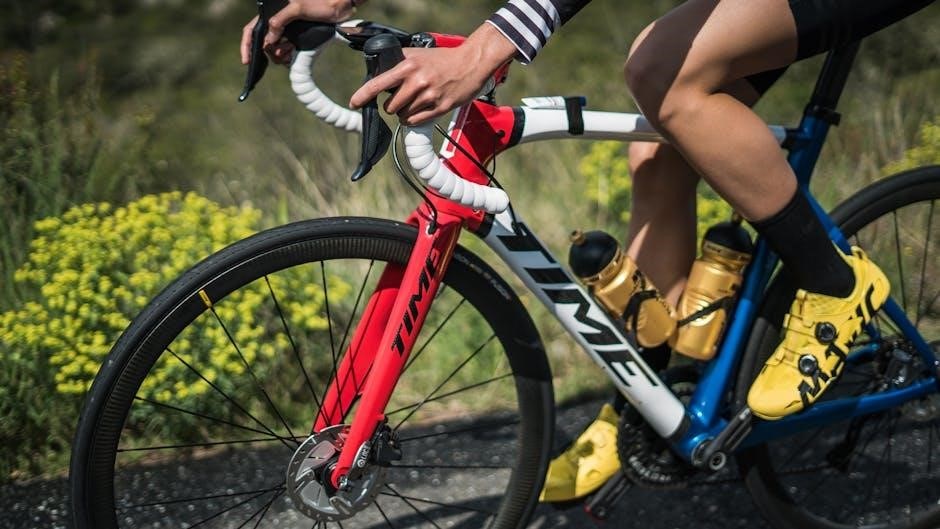
Popular Road Cycling Shoe Brands and Their Sizing
Brands like Shimano‚ Giro‚ and Sidi offer detailed size charts‚ ensuring precise fit․ Shimano’s sizes align with European standards‚ while Giro provides high-volume options for wider feet․ Sidi’s Millennium Fit offers enhanced comfort and adaptability․ Each brand tailors sizing to specific rider needs‚ making it essential to consult their charts for optimal fit and performance․

Shimano Road Cycling Shoe Size Guide
Shimano offers a comprehensive size guide for road cycling shoes‚ ensuring a precise fit․ Their sizing aligns with European standards‚ making it universal across the industry․ To determine your size‚ measure your foot length and refer to Shimano’s conversion chart․ For example‚ a foot length of 25․5 cm corresponds to a size 40․ Shimano recommends trying shoes in person for the best fit‚ but if shopping online‚ their size chart is a reliable guide․ Popular models like the SH-RP400 are designed for optimal performance‚ with a high-density synthetic upper for support․ Shimano’s sizing accommodates various foot shapes‚ ensuring comfort and efficiency during rides․ Always consider the specific features of each model‚ as some may offer a slightly different fit․ Using Shimano’s size guide ensures you find the perfect balance of comfort and performance for your road cycling adventures․
Giro Road Cycling Shoe Size Chart

Giro’s road cycling shoe size chart offers a detailed guide to help riders find their perfect fit․ Available in men’s‚ women’s‚ and High Volume (HV) options‚ Giro accommodates various foot shapes and sizes․ The HV option provides extra width for wider feet or those with a taller instep‚ ensuring comfort without sacrificing performance․ To use the chart‚ measure your foot length and match it to the corresponding size․ For instance‚ a foot length of 24․5 cm aligns with a size 39․ Giro’s sizing is consistent across their range‚ from racing models like the Empire to endurance-focused shoes․ They also offer a Comfort Plus Width option‚ adding 5mm to the toe box for added wiggle room․ Always refer to Giro’s specific size chart for each model‚ as slight variations may occur․ This ensures a snug‚ supportive fit‚ essential for optimal power transfer and comfort during long rides․
Sidi Road Cycling Shoe Sizing
Sidi road cycling shoes are known for their precise fit and high-quality craftsmanship․ The brand offers a detailed size chart‚ with sizes ranging from 36 to 50 in European standards․ Sidi emphasizes the importance of measuring both feet‚ as they may differ in length‚ and recommends using the longer measurement to ensure comfort․ If you’re between sizes‚ Sidi suggests opting for the larger size to avoid tightness․ Their sizing chart is designed to accommodate various foot shapes‚ with specific options for narrower or wider feet․ For example‚ a foot length of 21․0 cm corresponds to size 34‚ while 25․0 cm aligns with size 40․ Sidi also introduces innovations like the Millennium Fit‚ offering a slightly wider toe box for enhanced comfort and adaptability․ Always refer to Sidi’s official size guide for the most accurate fit‚ as sizing can vary slightly between models․
Pearl Izumi Road Cycling Shoe Size Guide
Pearl Izumi offers a comprehensive sizing chart for their road cycling shoes‚ ensuring a precise fit for optimal performance․ The brand provides a detailed conversion between European and U․S․ sizes‚ with options ranging from Euro 38 to 47․ For instance‚ a Euro size 40 corresponds to a U․S․ size 7‚ while Euro 45 matches a U․S․ size 10․5․ Pearl Izumi emphasizes the importance of snug yet comfortable fit‚ advising riders to consider their everyday shoe size and adjust accordingly․ Their shoes are designed to accommodate standard foot widths‚ but they also cater to varying needs with specific models․ To ensure accuracy‚ Pearl Izumi recommends measuring both feet and using the longer measurement․ The brand’s size guide is a valuable tool for selecting the perfect pair‚ whether for training or competitive racing‚ ensuring both comfort and efficiency on the road․

Fit and Comfort in Road Cycling Shoes
A snug‚ comfortable fit is crucial for road cycling performance‚ ensuring proper support and reducing foot fatigue during long rides․
The Importance of Snug Fit in Road Cycling
A snug fit in road cycling shoes is essential for optimal performance and comfort․ It ensures efficient power transfer and prevents excessive foot movement‚ which can lead to fatigue and discomfort during long rides․ A well-fitted shoe provides the necessary support and stability‚ especially when sprinting or climbing‚ where every pedal stroke counts․ Proper fit also helps prevent blisters and hotspots caused by friction․ Many brands offer high-volume options for wider feet‚ ensuring a comfortable yet secure fit․ Seasonal adjustments‚ such as wearing thicker socks in winter‚ may require sizing flexibility․ Ultimately‚ a snug fit enhances the overall cycling experience‚ allowing riders to focus on their performance without distractions․ Always prioritize trying shoes in person to ensure the best fit for your foot shape and riding style․
How to Ensure Toe Wiggle Room
Ensuring toe wiggle room in road cycling shoes is crucial for comfort and performance․ Proper fit allows toes to move slightly without feeling cramped‚ preventing discomfort and numbness during long rides․ To achieve this‚ measure your foot length and compare it to the shoe’s size chart․ A general rule is to leave about 1-2 cm of space between the longest toe and the shoe’s end․ This ensures adequate room while maintaining a snug fit․ When trying shoes‚ wear the same type of socks you plan to use for cycling․ Seasonal adjustments‚ such as thicker winter socks‚ may require a slightly larger size․ Additionally‚ consider the shoe’s width and shape‚ as high-volume options can accommodate wider feet․ Always prioritize comfort and functionality to optimize your cycling experience․
Seasonal Fit Considerations (Winter vs․ Summer Shoes)
Seasonal fit considerations are essential for optimal comfort and performance in road cycling․ Summer shoes are designed to be lightweight and snug‚ often requiring a slightly smaller size due to thinner socks․ Winter cycling shoes‚ however‚ need to accommodate thicker‚ insulated socks to keep feet warm․ This may necessitate choosing a half or full size larger than your summer shoes․ Additionally‚ winter shoes may have a looser fit to allow for extra layers‚ while summer shoes prioritize a tight‚ aerodynamic fit․ When selecting seasonal shoes‚ try them on with the appropriate socks to ensure proper fit․ Brands often offer specific models tailored to seasonal needs‚ so check their size charts for guidance․ Balancing warmth‚ support‚ and comfort is key to enjoying year-round cycling adventures․ Proper fit ensures peak performance and reduces the risk of discomfort during long rides in any season; Always prioritize comfort and functionality based on the time of year․
High Volume (HV) Options for Wider Feet
High Volume (HV) road cycling shoes are designed to accommodate wider feet or those with a taller instep‚ offering a more comfortable and spacious fit without sacrificing performance․ Brands like Giro and Sidi provide HV options‚ which feature a wider toe box and increased overall volume․ These shoes are ideal for cyclists whose feet may not fit comfortably in standard-width models․ HV options ensure proper support and prevent discomfort during long rides․ When choosing HV shoes‚ consider the same sizing guidelines as standard shoes but prioritize the extra width for a snug yet comfortable fit․ Many HV models retain the same stiffness and cleat compatibility as their regular counterparts‚ making them a practical choice for riders seeking enhanced comfort․ Always refer to brand-specific size charts to ensure the best fit for your foot shape and size․ HV shoes are a great solution for achieving both comfort and performance in road cycling․ Proper fit is crucial for optimal power transfer and all-day riding comfort․ Choose HV options if you need more room for your feet while maintaining high performance standards․ This ensures a better cycling experience overall․
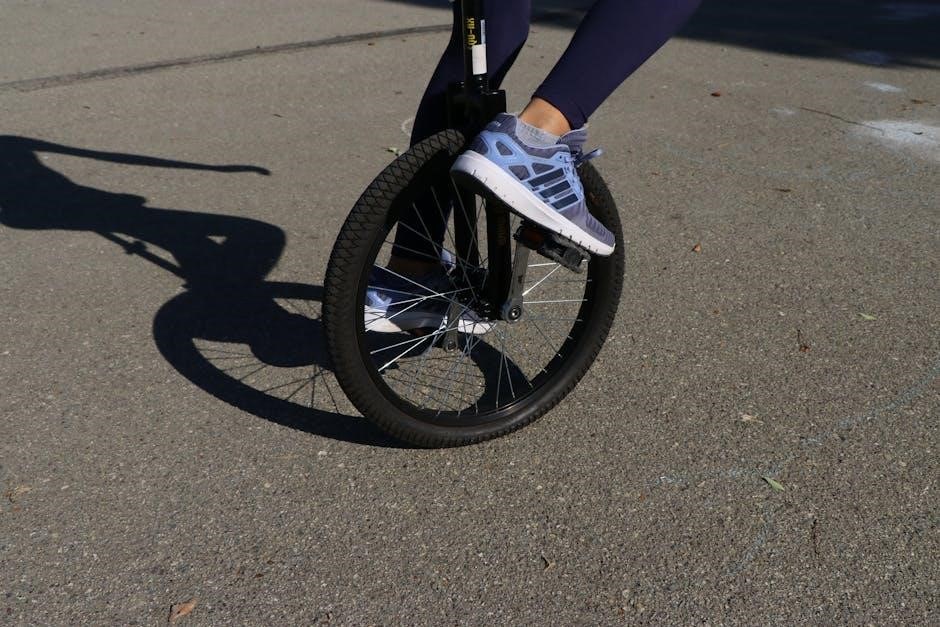
Choosing the Right Type of Road Cycling Shoe
Selecting the right road cycling shoe depends on your riding style‚ whether racing‚ endurance‚ gravel‚ or triathlon‚ ensuring compatibility with cleats and optimal performance for your specific cycling needs․
Racing vs․ Endurance Road Cycling Shoes
Racing and endurance road cycling shoes cater to different riding styles and priorities․ Racing shoes are designed for speed and efficiency‚ featuring ultra-stiff soles and minimal weight to maximize power transfer․ They often have a snug‚ aerodynamic fit and may include advanced cleat adjustment systems for optimal pedal performance․ In contrast‚ endurance shoes prioritize comfort over long distances‚ offering more cushioning‚ breathable uppers‚ and a slightly roomier fit to reduce pressure during extended rides․ While racing shoes may sacrifice some comfort for performance‚ endurance shoes balance efficiency with all-day wearability․ Choosing the right type depends on your primary riding goals‚ whether you’re competing in races or embarking on multi-hour adventures․ Both types require proper fit to ensure peak performance and comfort‚ making sizing and brand-specific features critical considerations․
Gravel and Triathlon-Specific Shoe Sizing
Gravel and triathlon-specific cycling shoes have unique sizing needs due to their specialized purposes․ Gravel shoes often feature a more robust design with added protection for rough terrain‚ which can affect fit․ They may have a slightly roomier toe box to accommodate swelling during long rides or hikes․ Triathlon shoes‚ designed for efficiency during transitions‚ typically prioritize a snug fit and quick entry/exit features․ Both types may use similar sizing charts to road shoes but require careful consideration of width and volume․ Some brands offer high-volume options for wider feet‚ ensuring comfort without sacrificing performance․ Proper fit is crucial for both disciplines‚ as ill-fitting shoes can lead to discomfort or decreased efficiency․ When choosing‚ consider the balance between support‚ flexibility‚ and the specific demands of your riding or racing style․
The Impact of Cleat Compatibility on Fit
Cleat compatibility plays a significant role in ensuring proper fit and performance in road cycling shoes․ Different cleat systems‚ such as Shimano SPD-SL or Look KéO‚ require specific shoe designs‚ which can affect how the shoe fits your foot․ Shoes designed for three-bolt cleats‚ common in road cycling‚ often feature stiffer soles for optimal power transfer․ However‚ compatibility with other cleat systems may limit shoe choices․ Some brands offer shoes compatible with multiple cleat types‚ providing flexibility for riders․ Proper cleat alignment and position can also influence comfort and efficiency‚ as misaligned cleats may cause discomfort or affect pedaling mechanics․ When selecting shoes‚ ensure they are compatible with your cleat system to maintain optimal fit and performance․ This alignment ensures a seamless connection between the shoe‚ cleat‚ and pedal‚ enhancing overall riding efficiency and comfort․
Selecting the right road cycling shoe size is crucial for comfort and performance․ Always measure your feet‚ consult brand-specific charts‚ and consider cleat compatibility․ Try shoes in person if possible for the best fit․
Achieving the perfect fit in road cycling shoes is essential for both performance and comfort․ Always measure your foot length accurately and refer to brand-specific size charts‚ as sizing varies․ Consider foot width and volume‚ as some brands offer high-volume options for wider feet․ Ensure a snug fit but allow enough toe wiggle room to prevent discomfort․ Seasonal considerations‚ such as thicker socks for winter shoes‚ can also impact fit․ Cleat compatibility should align with your cycling style and pedal system․ Lastly‚ try shoes in person if possible‚ and don’t hesitate to size up if unsure․ Investing time in proper fitting ensures optimal performance‚ reduces discomfort‚ and enhances your overall cycling experience․
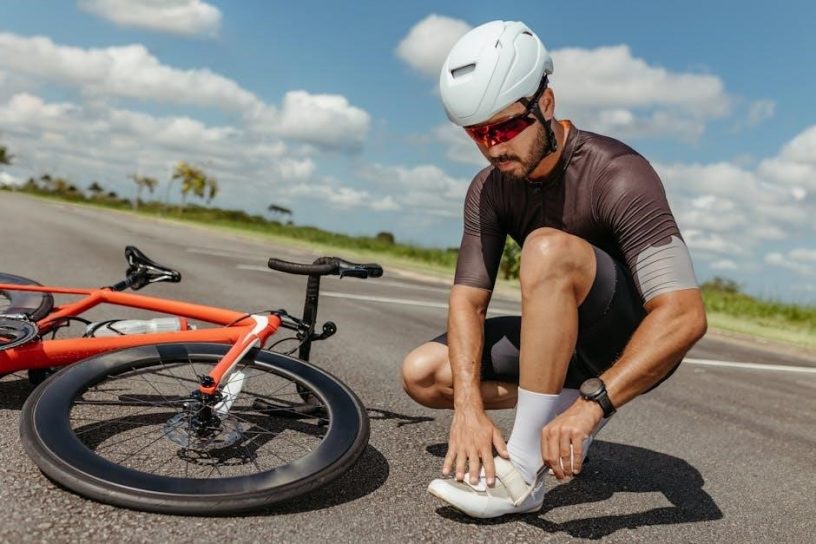



Leave a Reply
You must be logged in to post a comment.